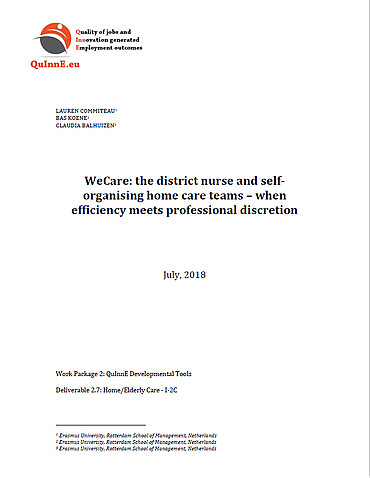Abstract
In late 2016, Bas Smit, CEO of WeCare, a large Dutch regional care organisation providing home care, intramural nursing home care and extramural social care, had just returned from a high-level funding session organised by the Dutch Healthcare Authority. In addition to people from the care sector, the meeting included representatives from insurance companies, government agencies and healthcare providers—all there on a rainy afternoon to assess recent attempts by care providers to improve the quality and personalization of home care while cutting costs.
Although all agreed on the move towards more local embedding with increased responsibility for nurses in neighbourhood-based, self-organising teams, there had been debate on precisely how to embed the teams in the organisation and their neighbourhoods. While some had argued for self-managing teams, following Dutch care organisation Buurtzorg’s very successful approach (ref) with completely autonomous teams, Smit believed that WeCare’s embedded self-organising teams featuring district nurses improved possibilities for local coordination.
This case explores WeCare’s model of self-organisation and addresses key challenges in dealing with issues of innovation, costs and efficiency, quality of care and the job quality of care workers. This case shows the complex regulatory and financial environment in which an existing home care organisation aims to develop and adapt by introducing self-organising teams.
Citation Note
Based on field research; 20 pages.
Follow the 'handle' link to access the Case Study on RePub.
For EUR staff members: the Teaching Note is available on request, you can contact us at rsm.nl/cdc/contact/
For external users: follow the link to purchase the Case Study and the Teaching Note.
Objective
1. Describe the forces at work driving the development towards self-organisation in the Dutch home care industry. 2. Recognize the key issues that WeCare, as a large regional care organisation, has to deal with from the perspective of the various actors involved. 3. Describe/evaluate how technical and organisational innovations affect the situation. 4. Understand how self-organisation potentially dissolves some of the core paradoxes in home care addressing cost-effectiveness, quality of care, and job quality.
